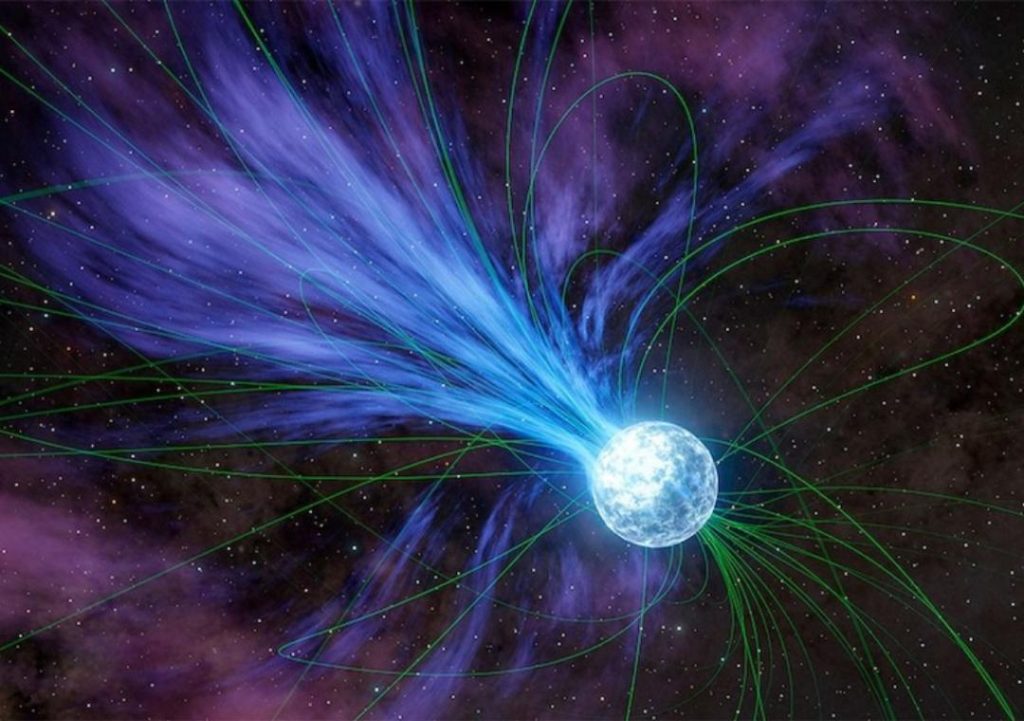
Gold & Platinum created through neutron stars’ explosions: Study
For centuries, humans have been fascinated by the origins of precious metals like gold and platinum. While we’ve made significant progress in understanding the formation of these elements, the exact mechanisms behind their creation have long been shrouded in mystery. However, a recent study led by Columbia University student Anirudh Patel has shed new light on the subject, revealing that magnetars or highly magnetized neutron stars played a crucial role in the creation of these elements through a cosmic event that took place over 20 years ago.
The Cosmic Connection
According to the study, magnetars are a type of neutron star that is capable of producing incredibly powerful explosions, releasing massive amounts of energy in the form of flares. These flares, it turns out, contain the elements we’re familiar with, including gold and platinum. The study suggests that these elements were forged during a cosmic event that occurred in the distant past, and were subsequently dispersed throughout the universe.
The Explosion That Shaped the Universe
To understand how this process works, it’s essential to delve into the world of magnetars and neutron stars. Neutron stars are incredibly dense objects that are formed when a massive star collapses in on itself. As the star collapses, the density of the matter at its core increases exponentially, causing a massive amount of energy to be released in the form of a supernova explosion.
Magnetars, on the other hand, are a type of neutron star that is characterized by its extremely strong magnetic field. This magnetic field is so powerful that it can create massive amounts of energy through a process known as magnetic reconnection. When a magnetar explodes, it releases this energy in the form of a powerful flare, which can travel vast distances across the universe.
The Creation of Gold and Platinum
The study suggests that during this cosmic event, the massive amounts of energy released by the magnetar’s explosion caused the elements present in the star’s core to be fused together, creating new and heavier elements. This process, known as nucleosynthesis, is responsible for the creation of many of the elements found on Earth, including gold and platinum.
According to the study, the explosion released a massive amount of energy in the form of a flare, which contained the elements created through nucleosynthesis. This flare then traveled through the universe, dispersing the elements throughout the cosmos.
The Frequency of Magnetar Explosions
So, just how often do magnetars explode, and how does this impact the creation of elements like gold and platinum? According to the study, magnetars explode approximately once per decade in the Milky Way galaxy, while across the observable universe, these explosions occur annually.
This means that the creation of elements like gold and platinum is a relatively common occurrence, with new stars and planets being formed and destroyed on a regular basis. This process has been ongoing for billions of years, with the elements created during these events being dispersed throughout the universe.
The Implications of the Study
The study’s findings have significant implications for our understanding of the universe and the origins of the elements we find on Earth. For centuries, humans have been fascinated by the mysteries of the universe, and the creation of elements like gold and platinum has long been a topic of speculation.
The study’s results provide a new and exciting perspective on the subject, revealing that magnetars and neutron stars play a crucial role in the creation of these elements. This knowledge can also help us better understand the origins of the universe and the evolution of its stars and planets.
Conclusion
In conclusion, the study led by Columbia University student Anirudh Patel has shed new light on the origins of precious metals like gold and platinum. Through the explosion of magnetars, these elements are created through a process known as nucleosynthesis, and are then dispersed throughout the universe. The study’s findings have significant implications for our understanding of the universe and the origins of the elements we find on Earth.






